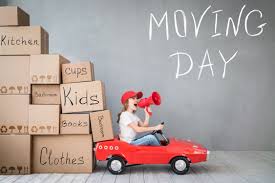Moving into a new home can feel like a fresh start, but let’s be honest—packing and unpacking is rarely fun. One of the most overlooked yet critical steps in making your move smooth and stress-free is labeling your boxes properly. A well-labeled box can save you hours of frustration, prevent lost or broken items, and help your movers (or your family and friends) handle your belongings with care. Whether you’re relocating with the help of a Flyttfirma Göteborg or doing it yourself, smart labeling makes all the difference.
In this guide, we’ll walk you through the importance of labeling, different labeling systems, tools you’ll need, and pro tips to make unpacking easier than you ever imagined.
Why Proper Box Labeling Matters
Many people underestimate labeling, thinking a quick marker scrawl will do. But here’s why effective labeling is worth the extra effort for smooth moving preparation.
- Faster unpacking – You’ll know exactly where each box goes in your new home.
- Better organization – No more digging through piles of boxes to find your coffee maker or kid’s school supplies.
- Prevents damage – Labels like Fragile or This Side Up alert movers to handle items carefully.
- Saves money and time – Movers spend less time guessing where things belong, which can reduce moving costs.
In short, a little effort upfront saves a lot of headaches later.
Step 1: Gather the Right Supplies
Before you start labeling, make sure you have the right tools. Here’s what you’ll need:
- Permanent markers – Fine-tip and thick-tip in multiple colors.
- Colored tape or labels – To help visually categorize boxes by room.
- Pre-printed moving labels – Optional but useful for consistency.
- Clear packing tape – To secure labels and keep them legible.
- Notebook or digital inventory app – To track contents of each box.
👉 Pro Tip: Avoid water-based markers. Ink can smudge during the move, making your labels unreadable.
Step 2: Choose a Labeling System That Works for You
There’s no one-size-fits-all approach. The best labeling system is one you’ll stick to. Here are some popular methods:
- Color-Coded Labeling – Assign a color to each room (e.g., red = kitchen, blue = bathroom, green = living room).
- Numbered Boxes with Inventory List – Label each box with a number and track it in a list or app.
- Room + Contents Description – Simple yet effective (e.g., “Kitchen – Utensils”).
- Hybrid Method – Combine color-coding with numbering for maximum organization.
Step 3: Label Placement Matters
Where you put your labels is just as important as what you write. Follow these rules:
- Label at least two sides and the top of each box.
- Keep placement consistent across all boxes.
- Avoid placing labels on seams or folds.
Step 4: Be Specific With Box Descriptions
Avoid vague terms like Miscellaneous. Instead:
✅ “Bedroom – Books (fiction)”
✅ “Kitchen – Plates and Bowls (Fragile)”
Step 5: Highlight Special Handling Instructions
Fragile, Heavy, Do Not Stack—make these labels big, bold, and visible from multiple sides.
Step 6: Create an “Open First” Category
Label essentials like bedding, toiletries, and chargers with Open First so you’re not hunting for basics on your first night.
Step 7: Keep a Master Inventory
Use a notebook, spreadsheet, or moving app to track your labeled boxes. This helps with organization and insurance claims if needed.
Step 8: Double-Check Labels on Moving Day
Before movers arrive, ensure every box is clearly marked and fragile boxes are separated from heavy ones.
Common Mistakes to Avoid
- Using only one label per box
- Writing too small
- Waiting until the end to label
- Mixing rooms in one box
Final Thoughts
Labeling your moving boxes effectively may seem like a small detail, but it’s one of the most powerful tools for reducing stress and saving time during a move. Whether you’re using color-coding, numbering, or a hybrid method, consistency is key. With a little preparation, you’ll enjoy a smoother moving day and an easier transition into your new home.
So grab your markers, tape, and labels—and start organizing your move like a pro!


